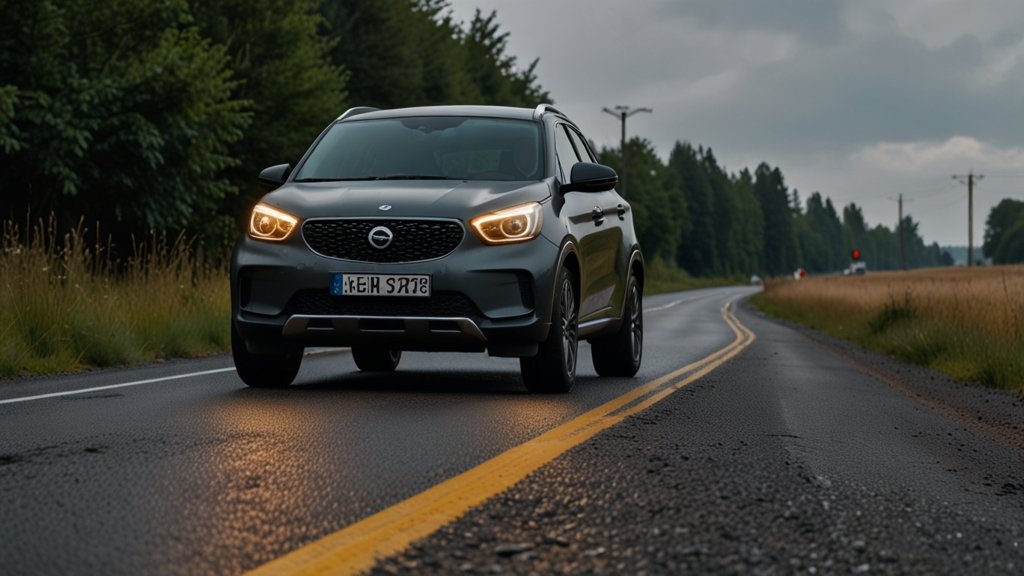What Are The Most Common Roadside Emergencies?
The AAA Foundation for Traffic Safety reports that breakdowns and flat tires are the top reasons Americans call for assistance, and being unprepared heightens anxiety. The key to safety lies in preparation and patience, rather than improvisation, as the emotional toll of an emergency can be as challenging as the physical inconvenience.
Whether you’re heading out for a daily commute or embarking on a cross-country road trip, the unexpected lurks just around the corner. Among the most frequent roadside emergencies are flat tires, overheated engines, and dead batteries. Even minor mistakes, like running out of fuel, can leave you vulnerable on the shoulder of a busy highway or alone in a remote area. For those situations where a vehicle gets stuck in mud or snow, relying on solutions designed to quickly recover your car is crucial. Services like a winch-out service Aurora Co specialize in safely extracting vehicles from tough situations—preventing further damage and reducing the physical risk you might face trying to handle it yourself.
Essentials To Keep In An Emergency Kit
An emergency kit should be customized to the driver’s climate, route, and frequency of travel. It should include reflective triangles, flares, jumper cables, a first-aid kit, a portable flashlight, non-perishable snacks, bottled water, a basic tool set for repairs, a warm blanket or sleeping bag for cold weather, and a USB phone charger and power bank for essential communication. Regular updates to the kit, such as replacing snacks, checking battery functionality, replenishing water bottles, and noting expiration dates on first-aid supplies, are essential to avoid being left empty when needed.
First Steps To Take When Trouble Strikes
After a breakdown or accident, remaining calm and thinking methodically is crucial. Guide your car away from traffic to a safe zone, engage hazard lights, and signal caution to other motorists. If stopped in a precarious position, remain inside with your seatbelt on until it’s safe to exit. If possible, exit from the furthest from traffic and move behind a guardrail or barrier. Always prioritize safety over rescuing belongings or inspecting damage on the vehicle’s traffic-facing side.
How To Make Yourself Visible To Others
Visibility is crucial in roadside emergencies, and hazard lights alone are insufficient. Place reflective triangles or flares far behind your car to create a clear warning zone for oncoming vehicles. Wearing a reflective vest during low visibility can make you easier to spot if you need to exit the car. The National Highway Traffic Safety Administration warns that pedestrians are more likely to be struck during dark or inclement conditions.
Knowing When To Call For Professional Help
If your vehicle is stubborn or has issues like lockouts or mechanical failures, it’s essential to seek professional help. Providers have specialized tools and experience to resolve issues safely and efficiently. Having the numbers for roadside assistance, insurer, and local emergency services saved on your phone can make the process faster and less stressful. Preparing for emergencies, especially in unfamiliar areas, is crucial for effective problem-solving.
Staying Safe During Bad Weather Incidents
Weather can significantly exacerbate routine breakdowns, with winter presenting snow and wet seasons causing hydroplaning and mud. Warm clothing, food, and water are crucial during extreme cold and hydration during hot months. Meteorological data indicates increased roadside assistance needs during weather changes, leading to longer wait times for professional help. Therefore, planning and staying alert are essential for surviving such emergencies.
How Technology Is Improving Roadside Safety
Modern vehicles and smartphones have advanced safety features, including automated emergency call systems, hazard lights, real-time tracking for roadside assistance, and advanced diagnostics. These technologies can help drivers and rescuers determine the best next step for an emergency. However, the effectiveness of technology depends on its user. It’s essential to ensure emergency location services are activated and to familiarize oneself with vehicle safety features. These upgrades can shorten response times and ensure the right help is available.
YOU MAY ALSO LIKE: Journeys Reimagined: Your Guide to Meaningful Adventures











